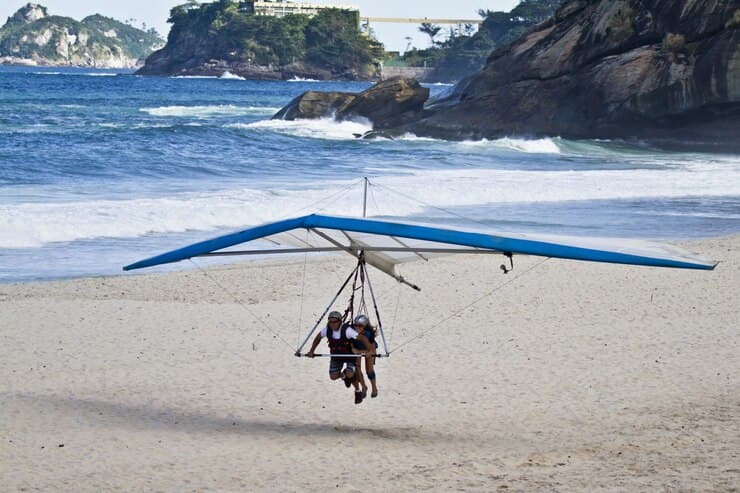Hang Gliding Death Rate: Debunking Myths in Aerial Sports
Thrilling and liberating, hang gliding and paragliding captivate enthusiasts with their allure of aerial exploration. However, within the exhilaration lies a prevalent concern: safety. These sports, often misunderstood, warrant a closer inspection of their safety aspects to dispel misconceptions and provide a comprehensive understanding.
Contrasting Safety Aspects
Both hang gliding and paragliding offer thrilling experiences while involving potential risks if mishandled. Annually, the United States Hang Gliding and Paragliding Association (USHPA) reports an average of 3.5 hang gliding fatalities and 5.9 paragliding fatalities.
Comparative Fatality Rates
In numerical terms, hang gliding registers 3.5 yearly fatalities among 3,000 to 4,000 participants, while paragliding records 5.9 fatalities within 4,000 to 5,000 participants. This equates to approximately 1 fatality per 1,000 hang gliders and 1 fatality per 760 paragliders annually.
Understanding Safety Dynamics
Hang gliding involves a pilot maneuvering a rigid winged frame through weight shifts, while paragliding employs a fabric wing for controlled flights. The differing aerodynamics necessitate varying conditions for takeoff and flight.
Explore thrilling aerial adventures like hang gliding in Washington State.
Risks and Mitigating Measures in Hang Gliding
- Focus and Decision Risks: A momentary lapse in concentration while hang gliding can lead to erroneous maneuvers. To mitigate this risk, pilots should maintain unwavering focus and adhere to strict preflight mental preparedness routines;
- Collision Hazards: Interaction with other aircraft during takeoff, landing, or mid-flight poses significant dangers. Flying in designated areas, maintaining communication with fellow pilots, and diligent airspace observation minimize collision risks;
- Weather Challenges: Adverse weather conditions, including gusty winds and low visibility, amplify the likelihood of accidents. Regular weather assessments, pre-flight checks, and knowledge of weather patterns are critical for informed decision-making on safe flying conditions;
- Landing Errors: Mishandling landings can result in severe injuries or fatalities. Rigorous training and practice, along with adherence to landing protocols, are essential to reduce landing-related risks;
- Equipment Reliability:Hang gliders are susceptible to equipment failures, potentially leading to crashes. Regular maintenance checks, use of high-quality gear, and understanding equipment limitations minimize the chances of failure mid-flight.
Risks and Mitigating Measures in Paragliding
- Similar Inherent Risks: Paragliding shares several risks with hang gliding, including focus-related errors, collisions, and weather challenges;
- Fabric Wing Vulnerability:An additional concern involves the fabric wing’s vulnerability to tangling due to wind gusts or foreign objects. Pilots must maintain calmness in such situations and have the necessary equipment like a knife and parachute for emergencies.
Check out the basic difference between hang gliding and paragliding here
By embracing rigorous training, adhering to safety protocols, and consistently honing their skills, pilots in both hang gliding and paragliding can effectively minimize these risks, ensuring safer and more enjoyable experiences in the skies.
Analyzing Fatalities and Making Informed Choices
Comparative analysis indicates a nuanced contrast in fatality rates, suggesting hang gliding is marginally safer than paragliding. However, personal risk perception plays a crucial role in selecting these activities.
Choosing Wisely for a Safer Experience
Deciding between hang gliding and paragliding necessitates considering comfort levels, adhering to safety protocols, and acknowledging the risks involved. Exploring these sports under expert guidance while prioritizing safety measures ensures a fulfilling and safer experience.
Conclusion
The exploration of safety in hang gliding and paragliding delineates nuanced statistics and individual perspectives. While the comparative analysis indicates a slightly lower fatality rate in hang gliding, both sports demand caution and skill.
Ultimately, the choice between them should consider personal comfort, strict adherence to safety measures, and the unwavering joy derived from soaring through the skies. Balancing the risks inherent in these activities ensures a fulfilling and safer experience, allowing enthusiasts to relish the thrill while prioritizing safety.
